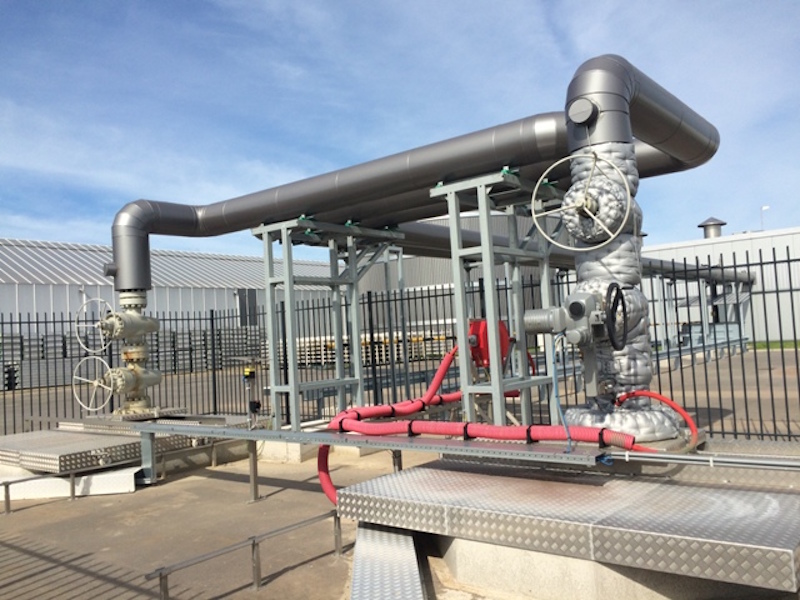Geothermal significantly helps curb emissions for Dutch greenhouse operator

Dutch greenhouse operator Floricultura has been able to save 9,000 tons of CO2 emissions per year with its investment into geothermal heating for its operations.
In the operations of Dutch greenhouse operator Floricultura in Heemskerk, cuttings of orchids and other tropical plants are cultivated using geothermal energy. Wart van Zonneveld is project leader of the geothermal energy project at the 7.1 hectare greenhouse complex. “We started using geothermal energy in the spring of 2015. In the preceding two years, the wells were drilled and the system constructed. We have supervised everything ourselves and hired expertise that is customary in the oil and gas industry where necessary, for example when drilling the wells. ”
Cleanest and cheapest renewable energy source requires enormous investment
The geothermal heat project in Heemskerk was the first project in North Holland and immediately became the hottest in the Netherlands; with 102 degrees Celsius at maximum flow (volume velocity). At the time it was a significant investment for Floricultura.
“Much has been learned in geothermal energy in recent years. Drilling wells is nothing new, but the design of a geothermal well is subject to advancing insight. Heating our greenhouses with this geothermal energy from a depth of 3,000 meters means annual savings of around five million cubic meters of gas. In this way we avoid locally emissions of 9,000 tons of CO2 per year, ”says Van Zonneveld.
In geothermal energy, the naturally occurring warm water is pumped up from the subsoil. It comes to the surface through a production well. In a heat exchanger, the water transfers its energy to a heat network that supplies homes, greenhouses or industry with heat. The cooled water flows back into the same layer of earth via pumps, after which it heats up again. Geothermal energy is seen as one of the cleanest and cheaper sources of sustainable heat. With every kilometre of depth, the temperature rises by about 31 degrees Celsius. Water with a suitable temperature for district heating is located in the Netherlands at a depth of approximately 1.5 kilometers.
Hardly any CO2 or nitrogen
It is a sustainable source of energy in several ways. Firstly, the stock in the Earth’s crust is virtually inexhaustible. Due to natural processes in the core of the earth, the water is constantly heated up. Depending on the thickness of the reservoir and the distance between the wells, the temperature of the pumped water drops after a period of about 35 years, which means that at some point a new well will have to be drilled. There are currently about 20 places in the Netherlands where geothermal energy is used.
“Advantages of geothermal energy include the fact that hardly any CO2 and nitrogen are released during the production of geothermal energy,” says Van Zonneveld. “The energy costs are also stable and predictable for a longer period of time and the source is not affected by external factors such as wind and sun. There are also disadvantages. “You cannot foresee some problems in advance. With a boiler you know when you have maintenance. Each geothermal energy system is unique and you have more uncertainties. Legislation, regulations and supervision policy are also still under development. After years, for example, you may be asked to conduct additional seismological research. These are cost items that you cannot foresee.”
All homes heated for 250 years
In 2012 TNO estimated the technical / economic extractable potential of geothermal energy in the Dutch subsurface up to 4 kilometers at approximately 85,000 PetaJoules. To give you an idea: this means that all 7.6 million homes in the Netherlands can be heated for more than 250 years. Currently there are 20 producing systems in the Netherlands with a total capacity of around 190 MWth. In 2017, a total of approximately 3 Petajoules of heat was produced, which is comparable to 94 million m3 of natural gas, or the gas consumption of 62,000 households.
Source: Warmte365